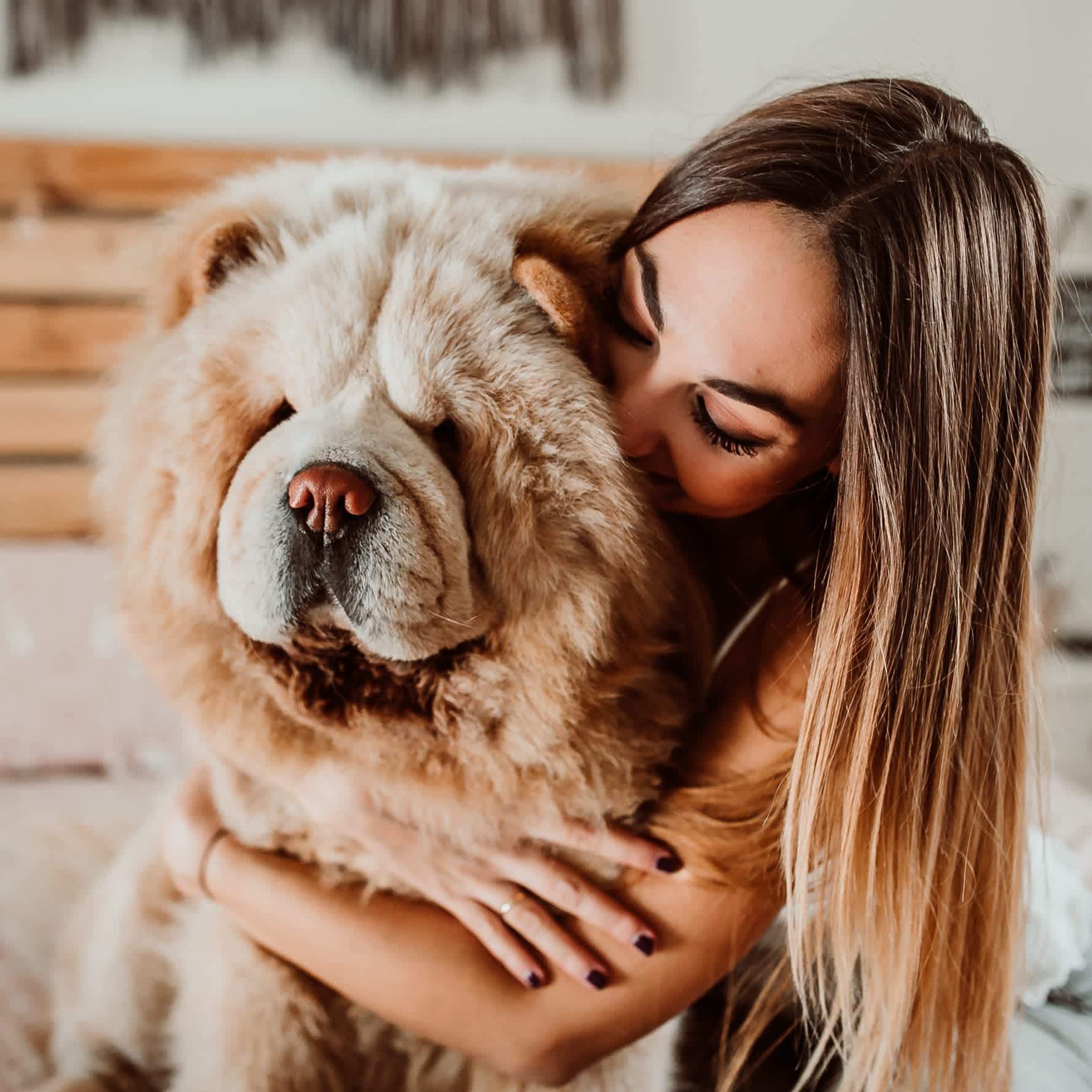
- POPSUGAR Australia
- Living
- If You're a Little Annoyed by Your Dog Following You Around the House, Here's What to Do
If You're a Little Annoyed by Your Dog Following You Around the House, Here's What to Do

Some days, you can’t get enough of your dog no matter how many tight hugs or unnecessary walks you give them. But other days, especially now that so many people are stuck at home, it might seem like your dog can’t get enough of you. They follow you everywhere you go, trip you up when you walk around the house, and patiently wait throughout every single one of your bathroom breaks. You adore them, but if your dog is attached to your hip for a full 24 hours, it’s hard not to miss peeing in peace. To figure out why your dog is following you around so much, we spoke to veterinarians and pet experts and got the answers. Here’s everything that’s going on in your dog’s head, and what you can do to help your dog feel happy and comfortable even when they’re not right by your side.
Related: I Worked as a Puppy Trainer, and These Are My Top Tips For Teaching Good Behavior
Why does my dog follow me around?
According to Kristen Levine, pet parenting expert and creator of Pet Living, there’s a number of reasons your dog might be clinging to you. “One is because dogs are pack animals by nature,” she said. “When your dog bonds with you and recognizes you as someone they can trust, they want to be around you!”
Dr. Ragen McGowan, PhD, a Purina pet behavior scientist, added that owners might also be rewarding this behavior without even realizing it. “We reinforce our dogs being close to us, whether intentionally or not, by pairing their proximity with all sorts of good things such as food, petting, and fun activities,” Dr. McGowan said. “Dogs are highly intelligent, curious beings and hanging close to their humans means that they won’t miss out on any of the action.”
Other potential causes include fear, low confidence, and separation anxiety. If you’re not sure whether or not your dog is suffering from anxiety, Levine said to check for common signs like excessive barking, overgrooming, pacing, and yawning. This is something your vet can help with.
Are certain breeds more clingy?
As Levine explained, there are actually some dog breeds, nicknamed “velcro dogs” that are naturally more likely to follow their owners around. These include small lap dogs like chihuahuas and pugs, and working breeds like German shepherds and doberman pinschers. However, Levine added that, “Any breed can become a velcro dog without proper training, set boundaries, and routines,” which is why it’s so important to set firm, clear expectations early on.
What can I do to help my dog become more independent?
To help set boundaries at a young age, Levine suggested crate training, which, according to Dr. Sara Ochoa, a veterinary consultant for doglab.com, is a great way to help your dogs feel more comfortable in their space. “Crate training your dog gives them their own space where they feel safe,” Dr. Ochoa said. “This will help them become more independent.”
For example, Levine said that when she’s working from home, she makes sure to crate her dogs for about two hours right before lunch (which her pups usually like to spend sleeping). She added that creating a place where your dogs feel comfortable, like a favorite bed or lounge area, can also help them feel safe when you’re not around. This is especially useful if anxiety is at the root of their clinginess.
If your dog needs additional encouragement, Dr. McGowan recommended providing fun distractions like puzzle toys to buy yourself some alone time. “Exercising your dog’s mind can wear them out just as much as physical exercise, creating opportunities for them to take a long nap rather than be underfoot,” Dr. McGowan explained. If your dog is still persistent after this, you can also try artificial separation methods like baby gates or closed doors.
Ultimately, your dogs just need to know that it’s OK for them to be alone, and you deserve to enjoy your personal space as well. As Dr. McGowan put it, “While it is great to maintain that close bond, it is also healthy for you and your dog to have a bit of alone time.” There’s no need to feel badly about setting healthy, happy boundaries.

